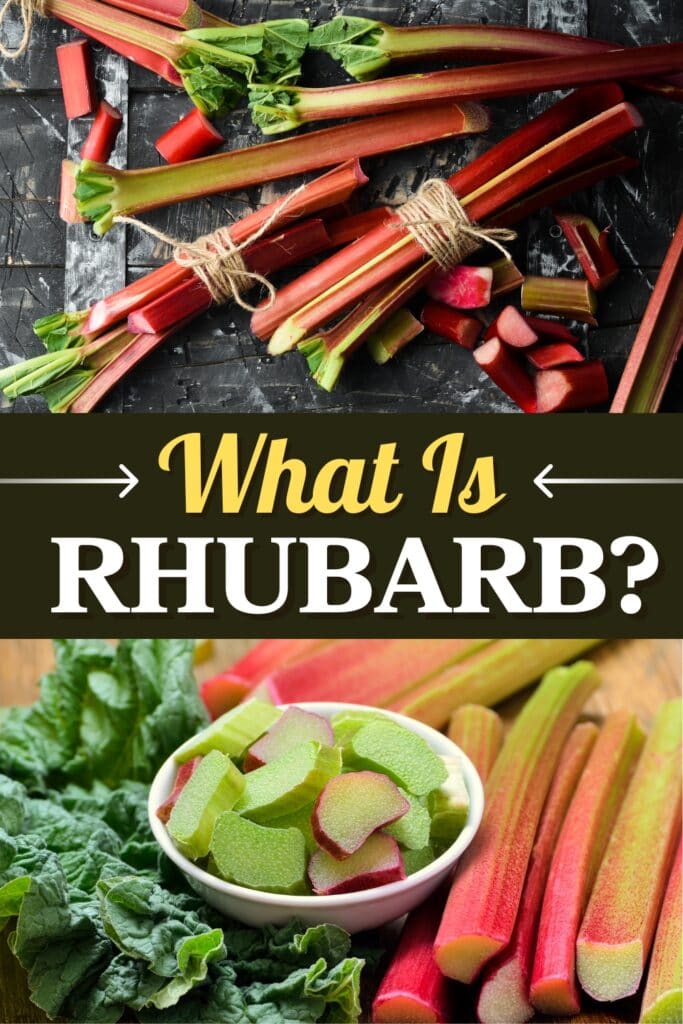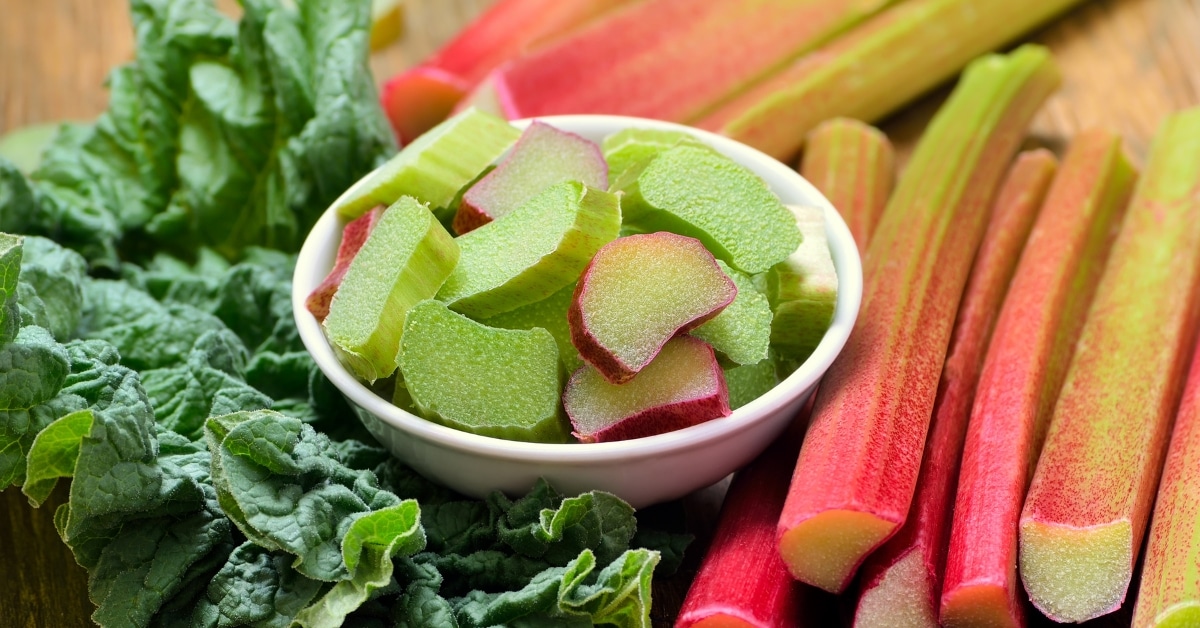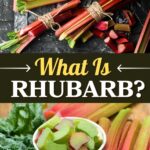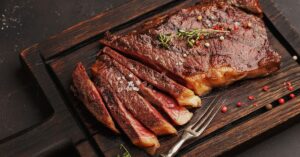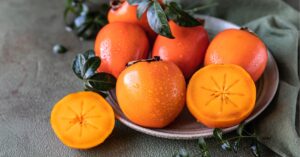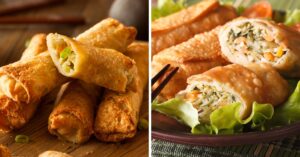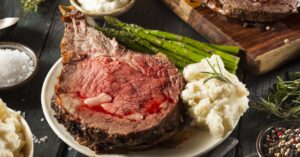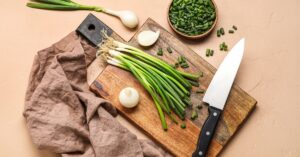So, what is rhubarb, and is it right for you? Well, maybe.
Are you a lover of fresh, seasonal produce?
Do you have an appreciation for unusual vegetables and unique fruit flavors?
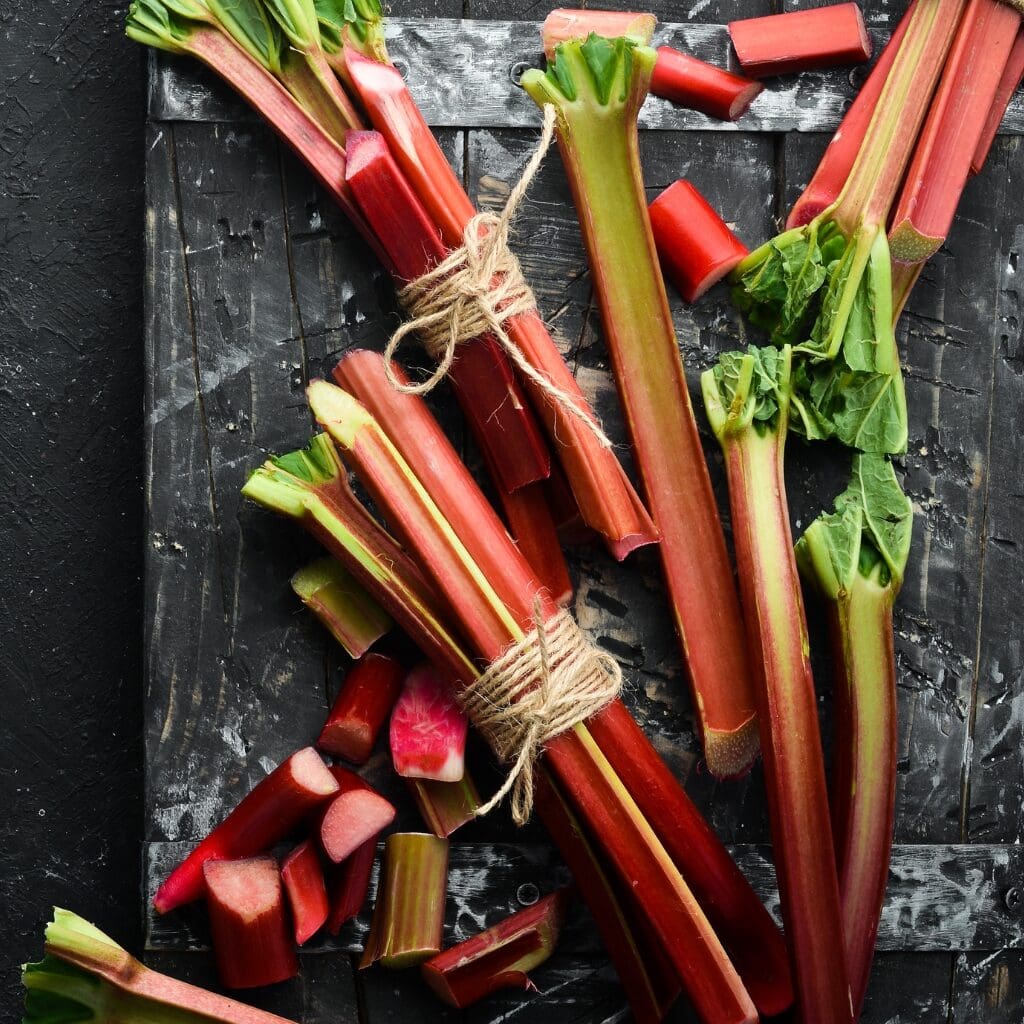
If so, the tart-tasting vegetable rhubarb could be your new favorite item to add to recipes.
Both sweet and sour, it has different qualities than many other things in your kitchen.
That, coupled with its vibrant red color, makes it especially interesting!
This post will explore precisely what rhubarb is, when it’s in season, and how you can use it.
So get ready to bust out those baking pans or fire up the stove. Let’s dive into the world of rhubarb!
What Is Rhubarb?
(Scientific name: Rheum rhabarbarum)
Rhubarb isn’t something you’ll generally see in the grocery store all year long.
However, it tends to pop up in the produce section in the spring and early summer.
It’s a perennial plant that thrives in cooler climates and loves cold winters.
People grow it both in their gardens for food and in their yards for ornamental purposes.
It’s a very beautiful plant with broad, gorgeously green leaves and bright red stalks.
Though, some varieties have green or speckled stalks. These are less attractive but usually taste sweeter.
Only the stalks of the plant are edible, and the leaves are quite poisonous.
As for whether the plant is a fruit or a vegetable, we’ll get to that in a later section.
First, let’s take a little side trip and talk about those different varieties I mentioned.

Rhubarb Varieties
When I first started cooking with rhubarb, I thought the red-stalk variety was the only kind there was.
Then, I heard my grandma talking about ‘green rhubarb.’ (At first, I thought it was rhubarb that wasn’t quite ripe.)
After a bit of research, I found out that there are numerous rhubarb varieties.
Some of the most common include the following: (I’ve also included their stalk colors.)
- Prince Albert rhubarb: green and red stalks that turn rose pink when cooked
- Victoria rhubarb: red and green stalks
- Holstein bloodred rhubarb: bright red stalks
- Colorado red rhubarb: red stalks with pink undertones and green insides
- Riverside giant rhubarb: green stalks
- German wine rhubarb: green stalks with red speckles
As you can see, there’s more to rhubarb than the traditional red. And these are only a few of the most popular varieties.
Typically, people reach for the red stalks when purchasing rhubarb.
However, the green-stalk varieties are almost always sweeter.
While their flavor profiles are similar, red stalks lean more on the sour-sweet ratio. Green ones are typically more sweet-sour.
Is Rhubarb a Fruit or a Vegetable?
Now, for the critical question of classification. Is rhubarb a fruit or a vegetable?! Well, technically, it’s both.
Scientifically speaking, rhubarb is a vegetable.
It’s a member of the Polygonaceae family. (Which also contains plants like sorrel and buckwheat.)
So that should settle it, right? Rhubarb is a vegetable. Why all the confusion?
Well, you can thank the USDA for that.
In a 1947 New York court case, they decided that rhubarb was a fruit. The USDA slapped the “fruit” label on it, and it pretty much stuck.
Some sources claim they did this because people use rhubarb like a fruit. (i.e., in desserts, jams, etc.)
And that is true since it’s rarely prepared like a vegetable.
However, the more important reason for its “fruit” designation was tax-related.
In the 1940s, taxes on imported veggies were higher than on imported fruits.
By classifying rhubarb as a fruit, the USDA helped merchants save some extra money.
Is it any wonder that people still consider it a fruit today?
What Does Rhubarb Taste Like?
Ask anyone who’s tried rhubarb what it tastes like, and you’ll likely get the same answer.
They’ll probably say something like, “Oh! It has a tartly sweet, fruity taste!”
That’s not strictly true, however.
Raw rhubarb by itself is not tartly sweet. It’s downright sour.
As mentioned, the green-stalk rhubarb is slightly sweeter than the red variety. But it’s still too sour to enjoyably eat alone.
So, the taste most people know is rhubarb’s taste when cooked with sugar and other ingredients. In that instance, it really is “tartly sweet.”
There are slight veggie-like undertones, though, that set it apart from real fruits.
Some people claim to taste hints of celery, but I don’t find that accurate.
It’s just slightly earthy underneath the sweetness.
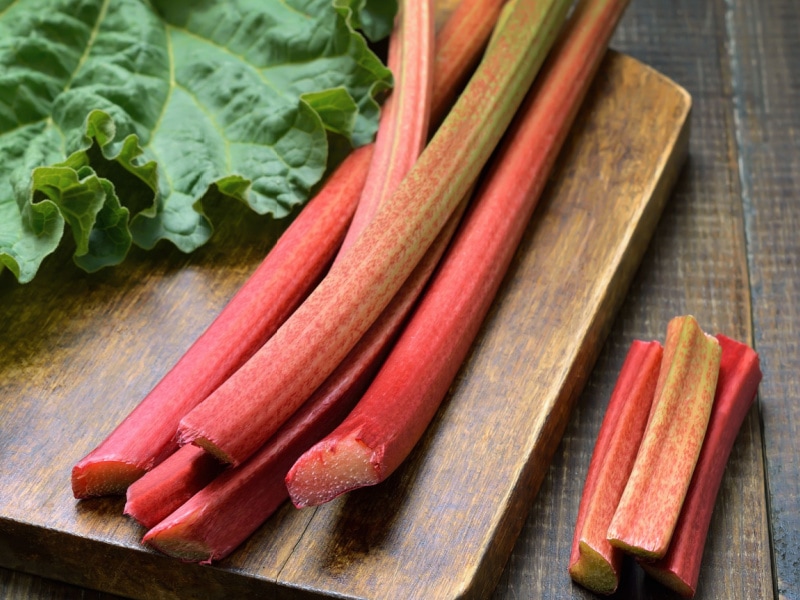
What Is Rhubarb Used For?
People primarily use rhubarb in baking.
Strawberry-rhubarb pie is a summer favorite for many.
Cookies, cakes, and tarts are other popular rhubarb desserts.
However, others use it to make jellies, jams, and chutneys.
This veggie-fruit isn’t just useful in sweet recipes, though.
You can also use it in various savory recipes, including salsa, marinades, and braises.
You can even work it into your favorite summer cocktails!
In short, rhubarb is a versatile veggie that’s often sadly overlooked in most kitchens.
If you want to try it for yourself, here are five of my all-time favorite rhubarb recipes:
- Grandma’s Strawberry Rhubarb Pie. It features a warm, buttery crust and the sweet, tangy flavor of strawberries and rhubarb. Delicious!
- Rhubarb Scones. These are crunchy, bright, and full of flavor.
- Rhubarb Bread. This bread is proof that rhubarb doesn’t need other fruits to taste incredible.
- Frozen Rhubarb Slush. A light, tart summer drink that you’ll love even though it’s alcohol-free.
- Tangy Rhubarb Salsa. This salsa is tangy, flavorful, and impossible to stop eating.
A quick Google search will turn up dozens more wonderful rhubarb recipes. There’s something out there for everyone.
When Is Rhubarb In Season?
Rhubarb is primarily a spring and summer veggie. It first becomes available in late March (in most regions).
In cooler areas, it may be April before you can find any harvestable rhubarb.
Typically, the plant keeps producing until early to mid-June.
Some people have also successfully grown rhubarb in contained “hothouse” environments.
In those cases, they can pretty much grow the vegetable year-round.
It thrives best in cool spring weather with temperatures of 75 degrees or lower.
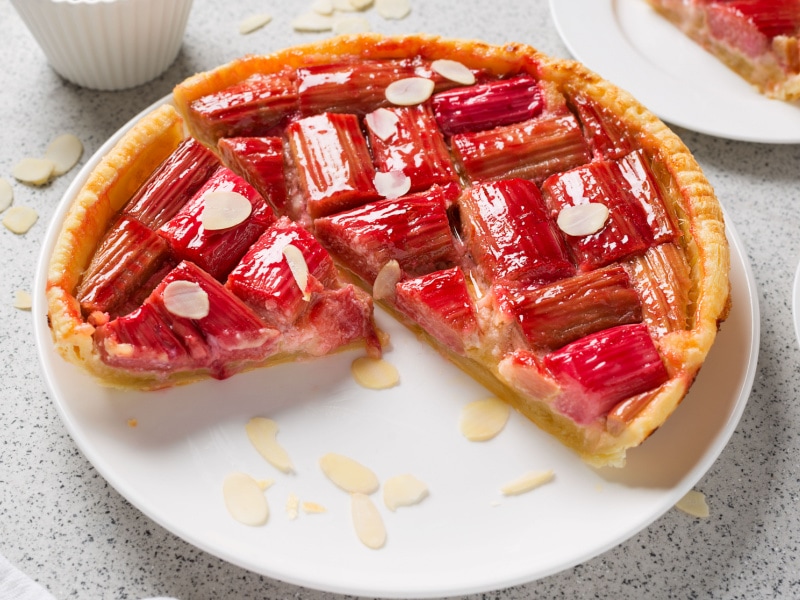
How to Store Rhubarb
You have two options when storing rhubarb: the refrigerator or the freezer. Here are the steps for storing it in the fridge:
- Shake off any excess dirt or debris from the stalks. You can even use a dry paper towel to wipe them down but don’t wash them.
- Wrap the stalks individually in aluminum foil. Don’t wrap them too tightly, especially around the ends. (If you don’t have aluminum foil, use a clean paper towel instead.)
- Place the wrapped stalks in a plastic or Ziploc bag. If you’re using a Ziploc bag, don’t close it. Don’t tie the ends of a plastic bag.
- Store the wrapped and bagged rhubarb in the fridge. It should remain fresh for up to 2 weeks.
If you need to store it for even longer, consider using the freezer instead. You can freeze it raw or freeze it after blanching it.
Either way, start by cutting the stalks into smaller pieces (about one to two inches).
Then, add them to boiling water for about a minute (if blanching).
After a minute, dump them in an ice bath. Doing so will help preserve the stalks’ vibrant red color.
Then, pat them dry with a paper towel and line them up on a cookie sheet covered in wax paper.
If you aren’t blanching them, transfer the cut pieces immediately to the cookie sheet.
Next, stick the sheet n the freezer uncovered. Let the stalks freeze for about 4 hours.
Finally, transfer the frozen stalk pieces to a freezer-safe Ziploc bag.
Remove the air from the bag and store it in the freezer for up to a year.
